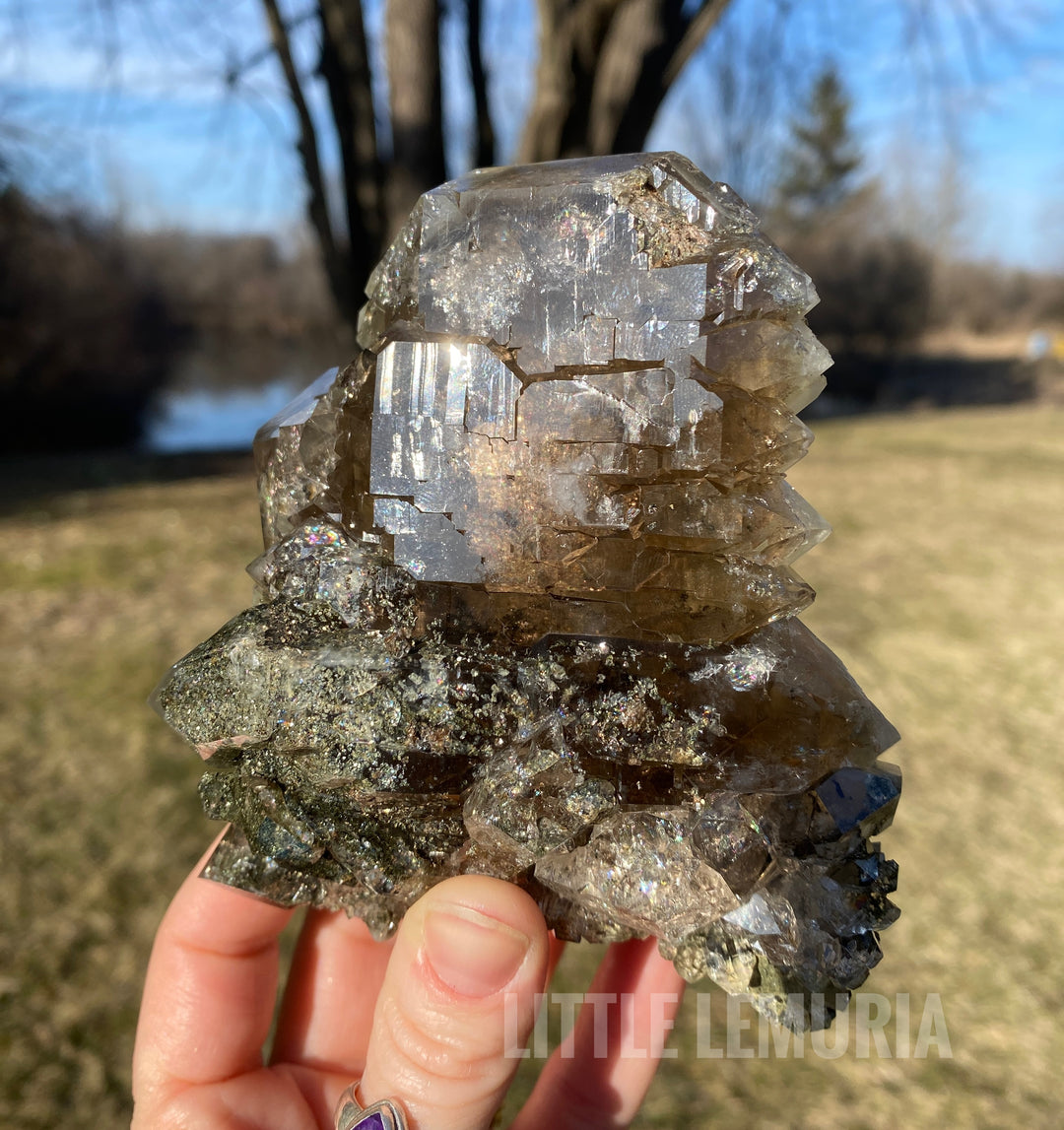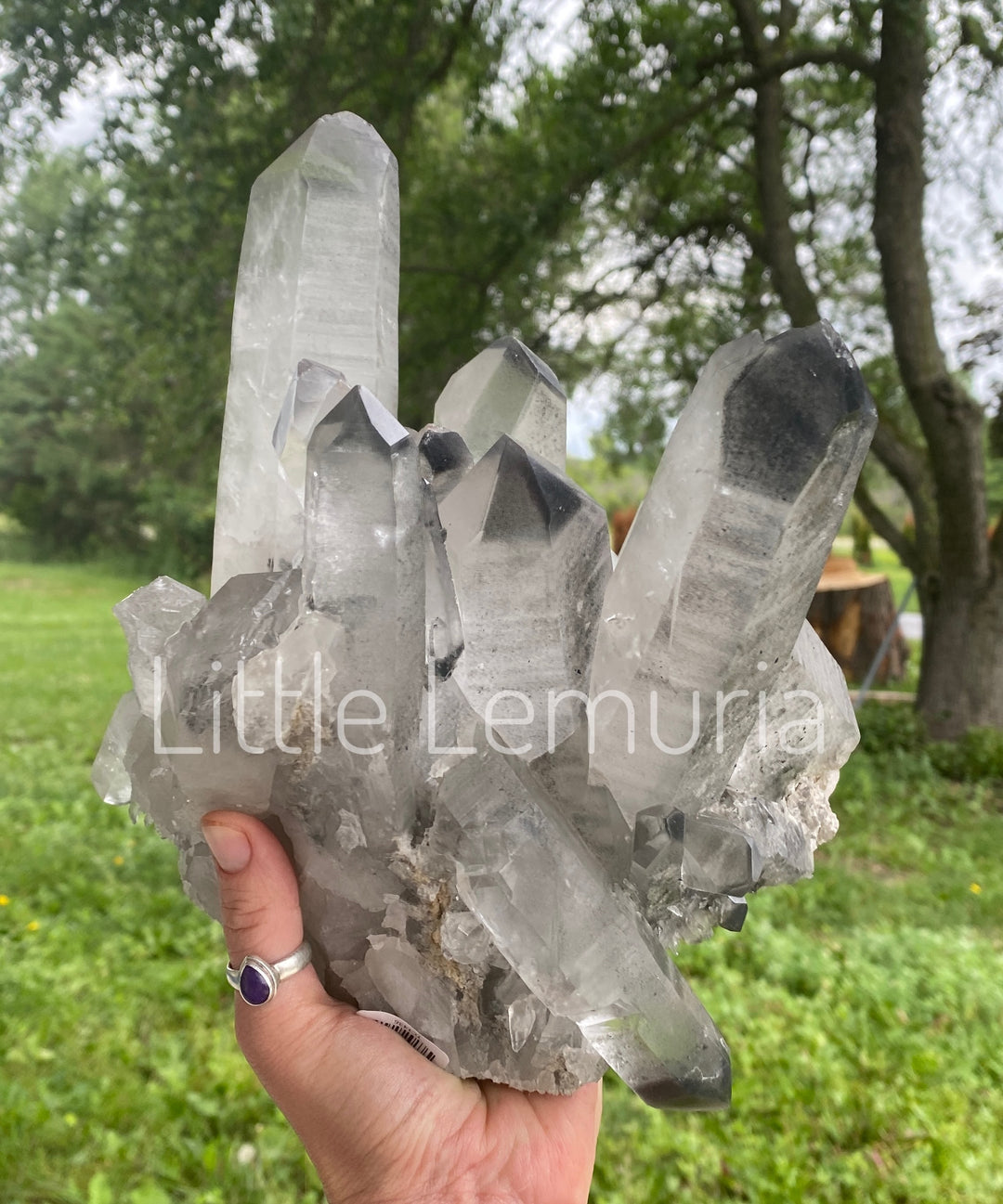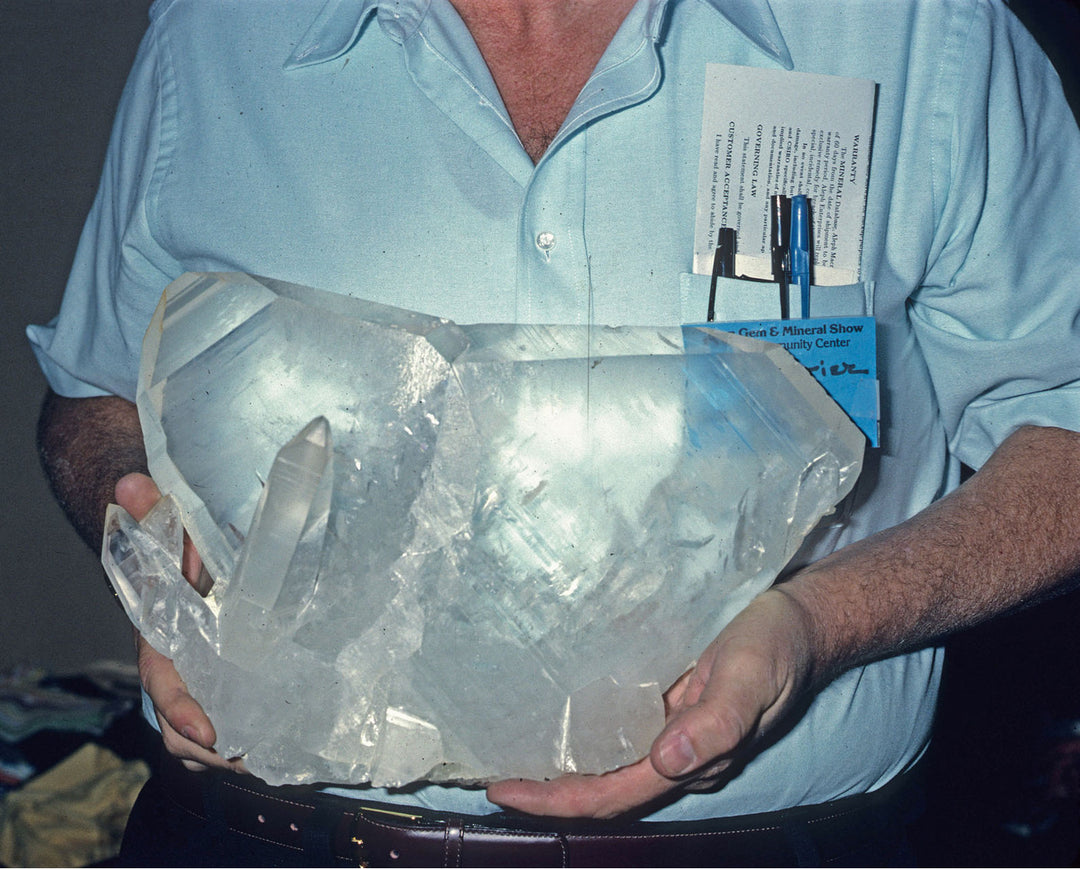The Twisted Science of the Gwindel
There has been so much buzz about gwindels among collectors lately, I think it’s time to spotlight this remarkable growth habit in a blog. If you aren’t familiar with this rare habit of quartz don’t feel bad! These pieces are truly rare, cost a pretty penny, and are not well known in metaphysical collecting circles.

A gwindel (pronounced g-Vin-dell) is not referring to a specific stone but rather a unique growth habit of quartz found only in Alpine-typical fissures. France, Italy, Russia, and most famously Switzerland are the most notable localities where gwindels are found. There are a handful of other localities but less than 12 countries in the world can boast their land has created one of these marvels.

There’s a lot to learn from the word itself about what exactly a gwindel is. The word is derived from the German adjective “Gewunden” meaning tortuous or full of bends and twists. Other translations for the word include twisted, spiraled, contorted, and…you get the idea. What makes this growth habit extraordinary is it’s twist around the a-axis specifically. It is not twisted due to any fracturing or shifting inside the pocket it grew in, nor is it twisted around a faden, rather it is twisted from a programing within, not environmental changes. In fact, gwindels are often found in pockets surrounded by normal habit crystals.

Identifying one of these unique crystals is not challenging if you know what to look for. Often open gwindels will look like several crystals stacked on one another to form one larger crystal. The terminations, which are often referred to as macromosaic, will look a bit like spikey teeth or just a single spike depending on the size of the crystal. The thickness of the crystal seems to directly correlate to the twisting angle (how dramatic the twist is). Thick crystals have less dramatic twists while thin gwindels have more exaggerated twists. The crystals can twist clockwise or counter clockwise and are referred to as right handed or left handed crystals respectively.

The list of gwindel terminology doesn’t stop here. Is your brain feeling a little twisted yet? Gwindels come in three distinct forms…open, closed, and half open half closed. It has been theorized that all gwindels start as closed gwindels. These look like fat, twisted, double sided razor blades (if those existed that is). These stubby little rectangles might just be the seeds of gwindels, and most will evolve and grow up to be open gwindels. However, a choice few will have their growth halted early and stay closed. Closed and half closed gwindels are the ultimate rare treat when it comes to quartz. The needle in the haystack, but the haystack is actually a massive mountain range spanning multiple countries.

Research on gwindels has been extensive. Decoding what makes them the way that they are is not easy. Through cathodoluminiscence imaging and X-ray technology, answers have been found about the internal structure that ruled out these crystals being some form of a twin. They did not however answer the big WHY question. Why do they form? What sparks in a crystal in these few unique mountainous environments and causes them to form differently from all their surrounding crystal mates. Gwindels do not form with Tessin or transitional habit crystals, although they are forming in the exact same alpine environment. I am of the belief a gwindel on a cluster of Tessin crystals is just too flipping magical and might break the universe if it existed.

Crystallographers and mineralogists have gone to great lengths to come up with answers as to why they form, but all remain only theories. These bad boys of the crystal world form in places where the crystals have taken millions of years to grow. They are the elders, the ancestors, and the keepers of magic. Gwindels will forever have a special place in my heart.
Gwindels are notoriously difficult to photograph and capture the beauty of the twist, so below are a few short videos of the pieces photographed above.
Smoky Quartz Gwindel from the Dodo Mine, Russia
Smoky Quartz Gwindel from Mont Blanc, Chamonix, France
Quartz Gwindel from Furka Pass, Uri, Switzerland
Smoky Quartz Gwindel from Mont Blanc, Chamonix, France
Half Open Half Closed Gwindel from Mont Blanc






